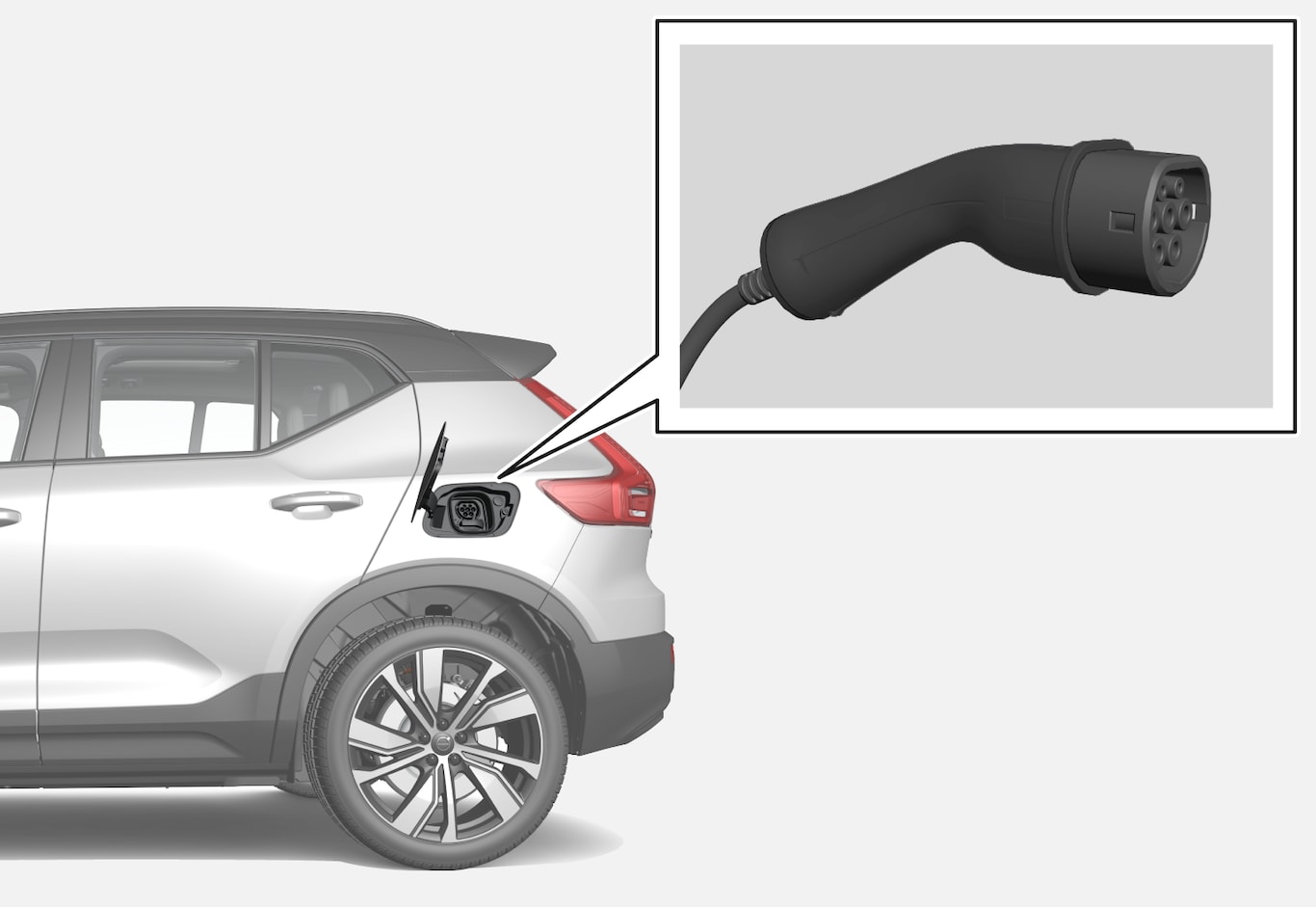The car can be charged via a charging station. The charging station can either be equipped with a charging cable or with a socket where a mode 3 charging cable can be connected.
The car can also be charged via a 230 V socket using a mode 2 charging cable.
Important
Fast charging
The car supports fast charging with direct current via charging stations that support the CCS (Combined Charging System) standard. A higher charging power can normally be achieved by charging with direct current, and the charging time can therefore be reduced. Highest charging power is normally reached when the battery's charge level is 0-30%. After that, the charging power gradually decreases.
Note
The time it takes for the high voltage battery to be charged is dependent on the charging power that is used.
Note
Warning
Charging cable handle and charging input socket

- indicator on the charging cable's control unit
- indicator lamp in the car's charging input socket.
- image and text in the driver display.
It is not possible to drive the car while charging is in progress.
High voltage battery performance may be reduced if the temperature in the battery is too low or high.